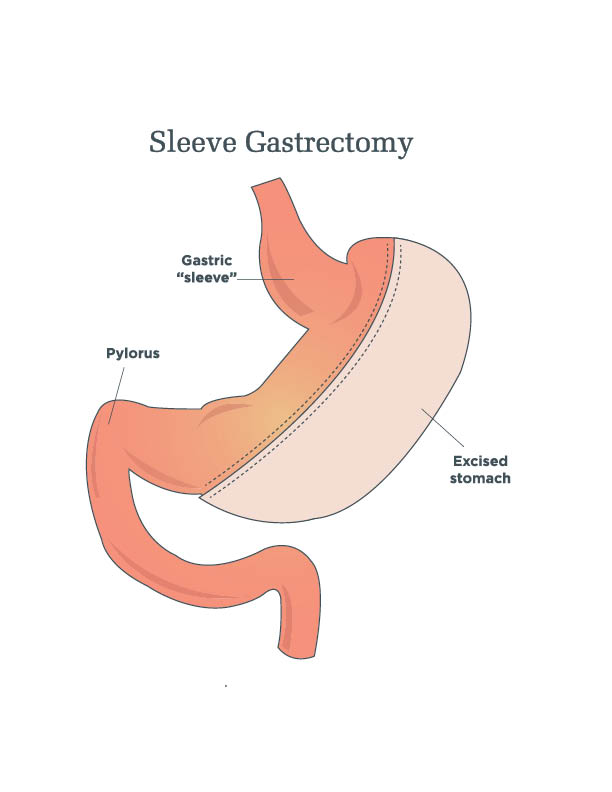
In this operation, the size of the stomach is drastically reduced down to a tube about the size and shape of a banana. About two-thirds of the stomach is permanently removed. This operation preserves the pylorus, which is the valve leaving the stomach. It does not involve bypassing any intestines.
How it Works
There are four effects: restriction, dumping, reduced appetite and possibly a small amount of malabsorption. Everyone undergoing sleeve gastrectomy experiences different degrees of each effect. All of these effects work together to help you drastically reduce the calories you consume.
Restriction
The much smaller stomach means you will be able to eat most, if not all types of food, but fill up much faster. About a cup to a cup and a half of food is what most people can comfortably eat.
Dumping
While not as much as with gastric bypass, you may experience unpleasant reactions to certain foods, including fatty foods, high-calorie liquids and sweets. Dumping can include nausea, diarrhea, cramping and low blood sugar. This helps you stay away from high-calorie foods.
Reduced Appetite
As with gastric bypass, sleeve gastrectomy reduces a “hunger hormone” called ghrelin. There is usually no hunger at all for the first few weeks to months. After that, it varies, with some people getting normal hunger back, and others who never seem to.
Malabsorption
After sleeve gastrectomy, you may not digest all of the calories in the food you eat. This is a very minor effect of the surgery.
Sleeve Gastrectomy Advantages
- Higher average weight loss than gastric band
- No device as compared to the gastric band
- Less complex surgery than gastric bypass or switch
- Preserves the pylorus and does not have the ulcer risk of gastric bypass
- Less chance of vitamin or mineral deficiencies than gastric bypass or switch procedures (SADI-S or Classic BPD/DS)
- Less risk of malabsorption problems than with switch procedures
Sleeve Gastrectomy Disadvantages
- Lower average weight loss five years after surgery than with gastric bypass or switch (SADI-S or Classic BPD/DS)
- GERD (acid reflux) is more common than after the other operations
- Diabetes control or improvement is not as significant as with gastric bypass or switch
- Non-reversible

